A Gibson electric guitar signed by rock legend Wubai (伍佰) stands side by side with a traditional moon lute in the first room of the Taipei Music Center’s new “Music, Island, Stories” exhibition.
The two stringed instruments from opposite ends of the world set the tone for the ensuing tour through the colorful evolution of Taiwan’s pop music scene, from movie theme songs during the Japanese colonial era to the modern band explosion and forays into hip-hop, EDM and other trendy Western styles.
Visitors can watch grainy footage of 1990s singing contests (including one of a then-unknown A-mei in 1992) in a faux appliance store stacked with old radios and televisions, or sit in a room modeled after a moving train and learn about how hopeful youth traveling north to seek their fortunes played a big part in the lyrics of those days. There are countless interesting artefacts along the way, including a performance costume donned by metal frontman-turned-legislator Freddy Lim (林昶佐), and also a spacious concert room where people can get a taste of a live stadium performance through projections on the walls.
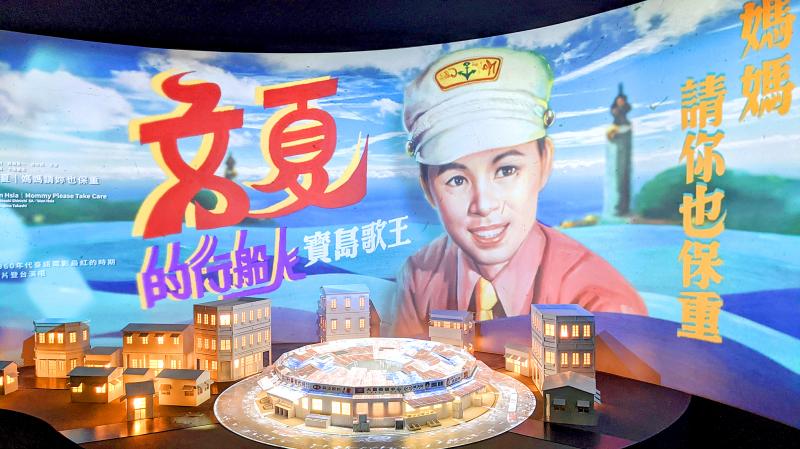
Photo: Han Cheung, Taipei Times
The show will open on Sept. 18 to mark the launch of the Taipei Music Center’s Cultural Cube, which will be the nation’s first exhibition hall dedicated to Taiwan’s pop music. The cube is part of the larger complex in Taipei’s Nangang District (南港) that includes a concert hall, creative hub and an outdoor plaza. The concert hall opened in August last year and hosted the 31st Golden Melody Awards in October.
Many people hear the words “pop music” in Taiwan and immediately think of Mandopop crooners wailing about their lost love, or teenybopper idol groups dancing frenetically to upbeat electronic grooves. Indeed, those elements are probably the most familiar to the casual foreign listener as they were what made Taiwan the music center of the Chinese-speaking world for the past several decades.
But there’s a lot more to it if you dig just a little deeper, as the development of the nation’s music scene, from banned songs to the campus folk movement, also reflected the social and political climate of those times. Fortunately, pop here doesn’t just refer to the musical genre known as “pop,” but any music in Taiwan that has enjoyed mass appeal and made significant cultural and social impact.
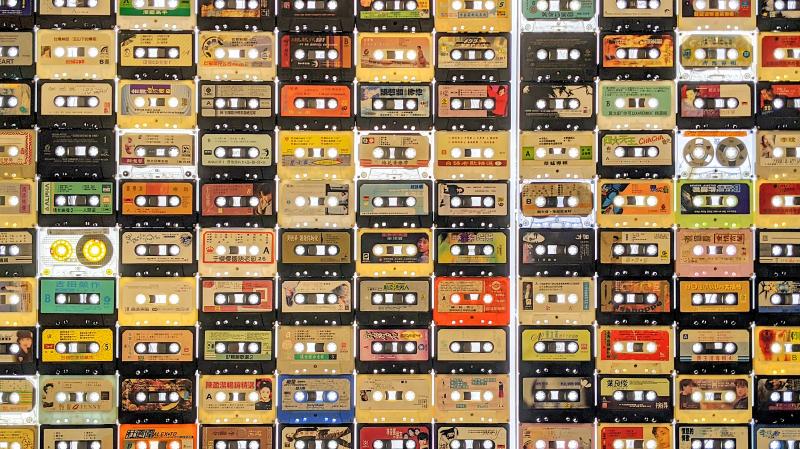
Photo: Han Cheung, Taipei Times
As music critic, DJ and author Ma Shih-fang (馬世芳) notes in in the introductory notes: “One key word here is ‘freedom.’ Even under the conservative authoritarian regime, singers let their imaginations run free to express feelings of oppression and desire. As time moves ever forward, pop music has truthfully documented society’s sweeping transformation.”
The exhibition is thoughtfully designed, with many specially-themed rooms designed to provide an immersive experience. Bold and bright-colored montages of former stars with their signature lyrics fill up the sky over a model of Taipei’s Dadaocheng roundabout, which was one of the earliest centers of Taiwanese pop for several decades. Visitors then pass through the electronics store to an old-school movie theater screening film-related songs — what’s considered Taiwan’s first pop song was released in 1932 to accompany the Chinese film, Peach Blossom Weeps Tears of Blood (桃花泣血記). The theater’s exit then brings the viewer directly into the train room.
This part of the exhibition is especially well-done — visitors seamlessly shuffle through a series of contained environments from the past, and it will surely stir up nostalgia of those who experienced it back then.
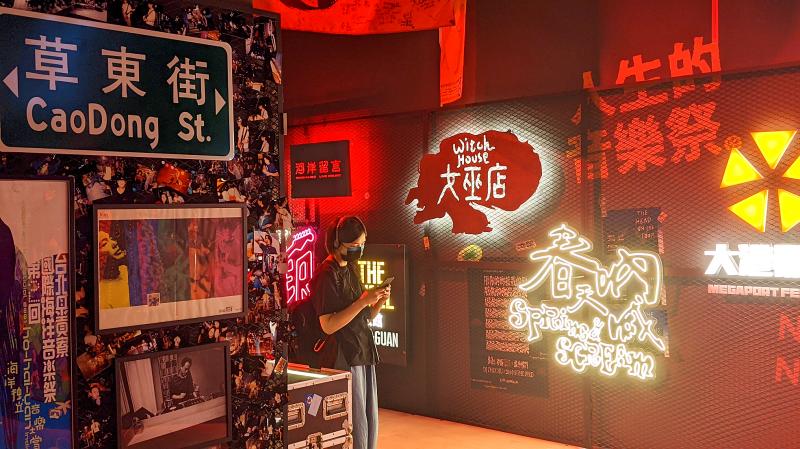
Photo: Han Cheung, Taipei Times
Unfortunately, not the entire exhibit can be like that, and the campus folk room is more of a standard exhibition setup, although still with fascinating items and information. From the stairway, viewers get a panoramic view of the whole complex, including the under-construction condos to the left and lush mountains to the right.
The next few rooms are more artefact heavy, and those who are familiar with the scene can seek an effects pedal, a microphone or even a pair of shoes belonging to your favorite musician. It has panels explaining more recent developments in Taiwan’s music history, but while the text does allude to martial law and creative freedom throughout, there could’ve been just a small section dedicated to a deeper dive into the far-reaches of state censorship and how people pushed back.
Descend the stairs again to the band room, where the dark walls are plastered with neon and acrylic signs and logos of live houses. With towels from various music festivals hanging from the ceiling, this room reflects the importance that independent acts have had on the nation’s music scene. It’s interesting to see what was once shunned by the mainstream as “underground music” now gets a room bigger than the campus folk section. Ah, times have changed.
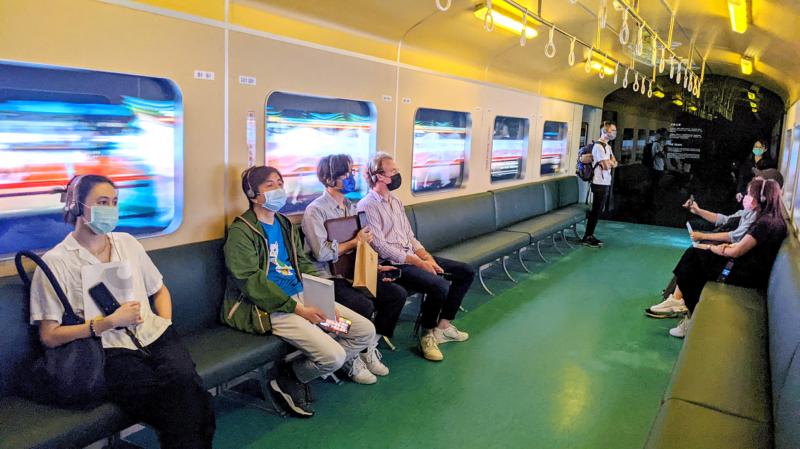
Photo: Han Cheung, Taipei Times
The concert room is actually quite cool, as one can get somewhat of a live show experience without having to be squashed between rabid fans. Four concerts will be rotated throughout the day, and the offerings will change periodically.
Overall, it’s a quite thoughtful and well-put together exhibition with pleasing graphics and displays. It’s a great primer to launch the space with, and it’s exciting to see what special shows they will put forth in the future.
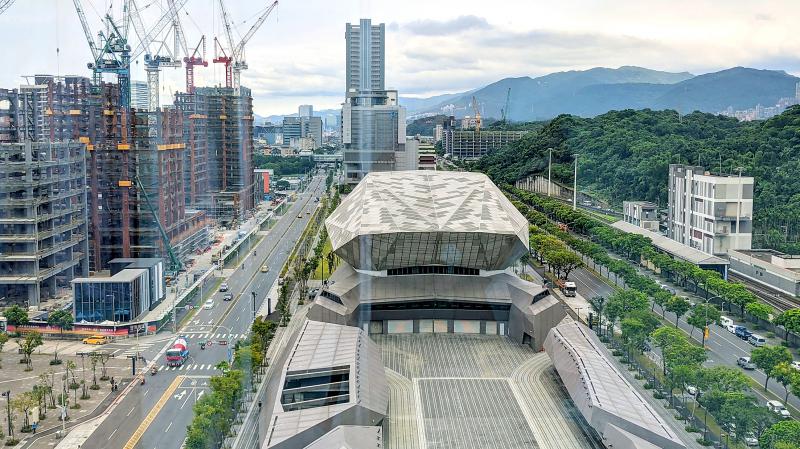
Photo: Han Cheung, Taipei Times
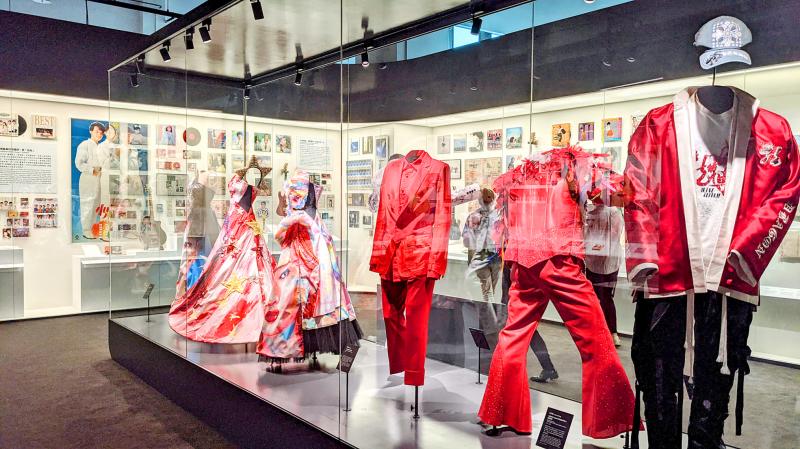
Photo: Han Cheung, Taipei Times
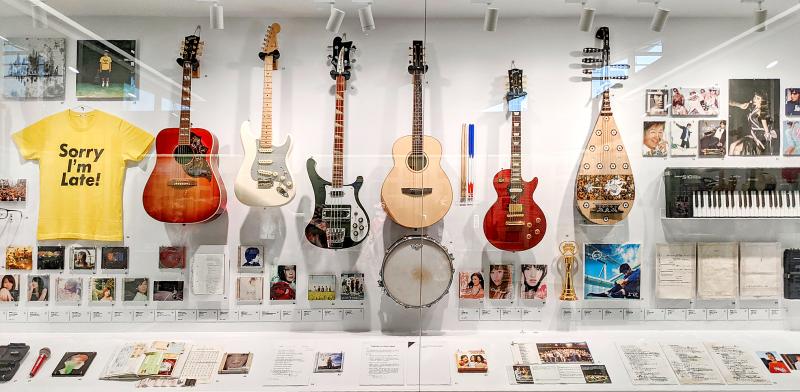
Photo: Han Cheung, Taipei Times
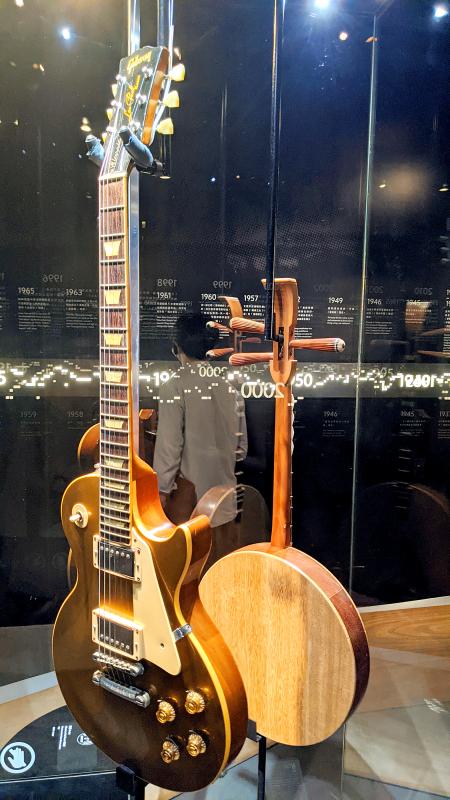
Photo: Han Cheung, Taipei Times

June 2 to June 8 Taiwan’s woodcutters believe that if they see even one speck of red in their cooked rice, no matter how small, an accident is going to happen. Peng Chin-tian (彭錦田) swears that this has proven to be true at every stop during his decades-long career in the logging industry. Along with mining, timber harvesting was once considered the most dangerous profession in Taiwan. Not only were mishaps common during all stages of processing, it was difficult to transport the injured to get medical treatment. Many died during the arduous journey. Peng recounts some of his accidents in

“Why does Taiwan identity decline?”a group of researchers lead by University of Nevada political scientist Austin Wang (王宏恩) asked in a recent paper. After all, it is not difficult to explain the rise in Taiwanese identity after the early 1990s. But no model predicted its decline during the 2016-2018 period, they say. After testing various alternative explanations, Wang et al argue that the fall-off in Taiwanese identity during that period is related to voter hedging based on the performance of the Democratic Progressive Party (DPP). Since the DPP is perceived as the guardian of Taiwan identity, when it performs well,

A short walk beneath the dense Amazon canopy, the forest abruptly opens up. Fallen logs are rotting, the trees grow sparser and the temperature rises in places sunlight hits the ground. This is what 24 years of severe drought looks like in the world’s largest rainforest. But this patch of degraded forest, about the size of a soccer field, is a scientific experiment. Launched in 2000 by Brazilian and British scientists, Esecaflor — short for “Forest Drought Study Project” in Portuguese — set out to simulate a future in which the changing climate could deplete the Amazon of rainfall. It is

The Taiwan People’s Party (TPP) on May 18 held a rally in Taichung to mark the anniversary of President William Lai’s (賴清德) inauguration on May 20. The title of the rally could be loosely translated to “May 18 recall fraudulent goods” (518退貨ㄌㄨㄚˋ!). Unlike in English, where the terms are the same, “recall” (退貨) in this context refers to product recalls due to damaged, defective or fraudulent merchandise, not the political recalls (罷免) currently dominating the headlines. I attended the rally to determine if the impression was correct that the TPP under party Chairman Huang Kuo-Chang (黃國昌) had little of a